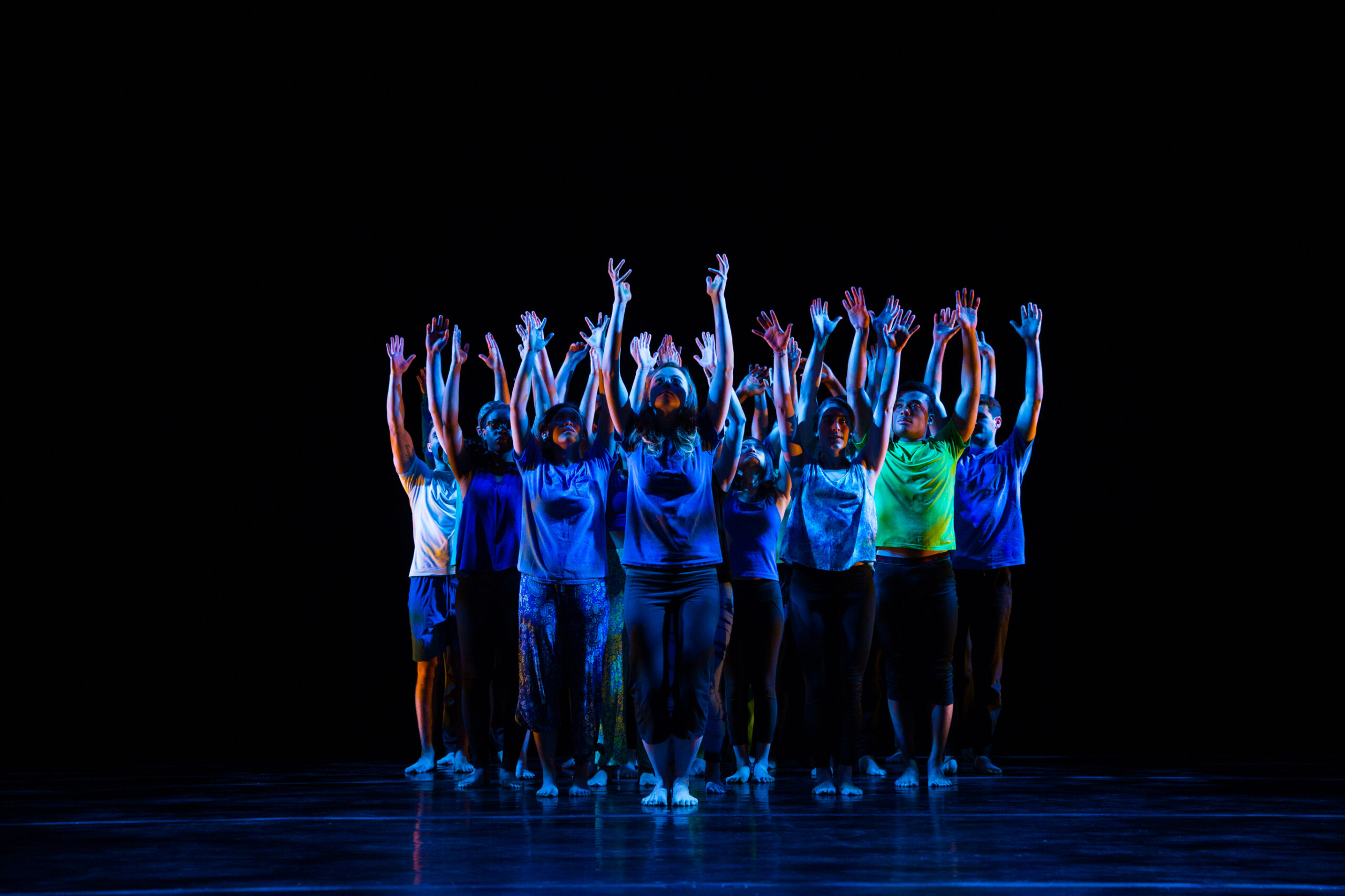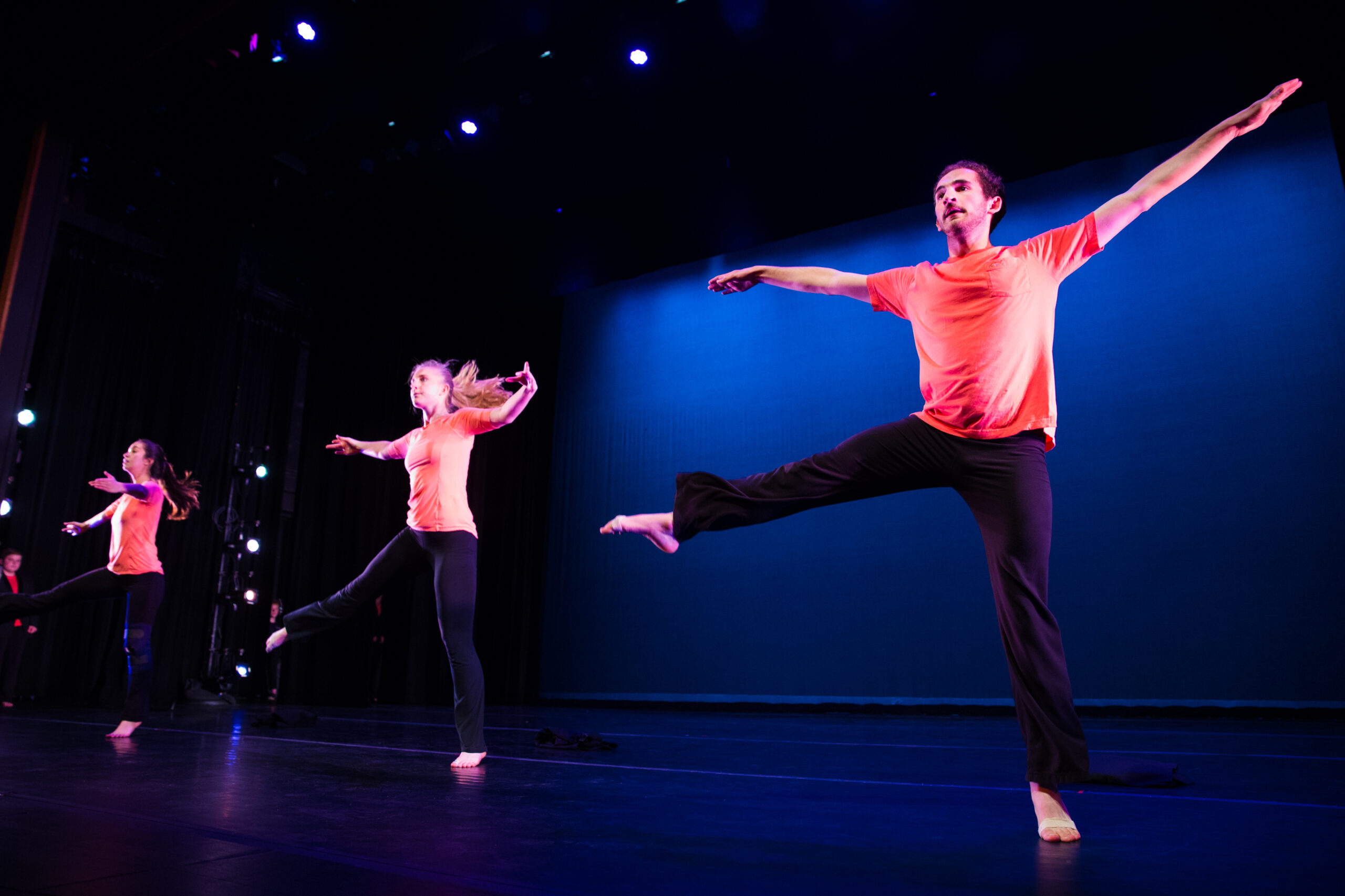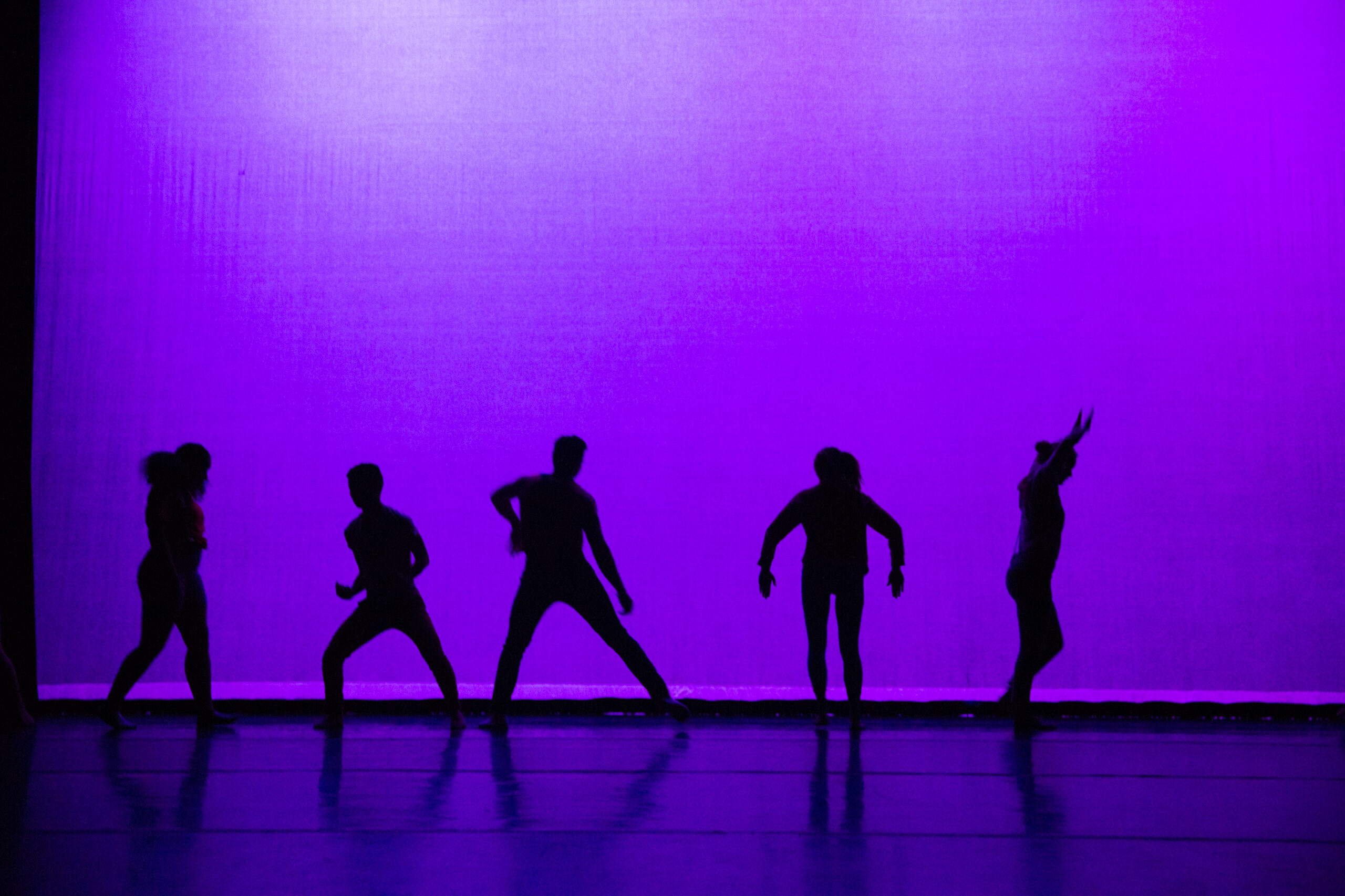Queer choreography takes center stage in Spring Dance Concert
May 3, 2018
 Ann Basu
Ann BasuIn preparation for the Spring Dance Concert, the Department of Theater and Dance enlisted change agent Katy Pyle as guest choreographer. Though the annual concert typically only showcases the work of the department’s students and faculty, this year, Pyle collaborated on the performance with faculty choreographers Aretha Aoki, Gwyneth Jones and Vanessa Anspaugh. The performance they created brings potential for transformation—for dancers and audience alike.
Along with teaching ballet at The New School in New York City, Pyle is co-founder and artistic director of the dance company Ballez. According to its website, the company is a “performance, company, class and community that invites everyone to witness and celebrate the history and performances of lesbian, queer and transgender people.”
“Representing queerness in dance is very important to me,” said Pyle. “It’s something that can be viewed with a sense of integrity. It doesn’t always have to be funny or a side character. It can be something that’s at the center and can be taken seriously and be really compelling because it is.”
Two dance classes, the Advanced Modern Repertory and Performance class and the Intermediate Ballet and Beyond class worked with Pyle for two weeks, ultimately performing the second half of her piece, “Sleeping Beauty and the Beast.”
Riffing on the theme of sleeping, the dance considers the audience’s level of consciousness regarding important issues.
“It shows the things that we’re awake to and the things we’re asleep about,” said Pyle.
Pyle originally choreographed the show in 2016. It is set in 1993 in a club in the Lower East Side’s queer community. One of the major themes the piece deals with is the AIDS epidemic. Pyle explained that 1993 “was a really sad time in the queer community,” particularly because the epidemic was still in full swing and medicine to treat AIDS had not yet been created.
In the first rehearsal for “Sleeping Beauty and the Beast,” inspiration struck for Pyle.
“The context of the dances and the death inside of the club made me think about Orlando. So we talked about tying ideas that we were working with performatively into this current moment of thinking about gun violence and mass shootings, Orlando being a specific connection,” Pyle said. “It’s important to me to connect to what’s happening with people.”
One of the characters in the dance is called the Beast. The dance deals with society’s projection of beastliness onto queer people, when the real beast is indifference.
“The beast is apathy. It’s actually being asleep. It’s actually not caring about other people,” Pyle said.
Pyle’s approach was anything but apathetic. She incorporated discussion of consent into her teaching of the dance’s intimate partner duets.
“We had conversations about really visibly displaying consent in those duets. The young women performing those should be in charge of their sexuality. It’s not something that’s happening to them,” Pyle said.
Pyle has been at Bowdoin for a little over two weeks, necessitating a very short and intensive rehearsal schedule. Nevertheless, she has seen great growth in the dancers over the course of her visit.
“I’m witnessing a powerful transformation inside of the dancers,” said Pyle. “I feel that they are giving empowered performances that are really risky. There are so many deep issues inside of it, and I’m impressed by what the dancers have done. It’s good to see that college students can take on these intense themes and rise to that.”
Theodora Hurley ’20, a student in the Advanced Modern class who performed in “Sleeping Beauty and the Beast,” has been inspired by the opportunity to learn from Pyle.
“Her work is activist and queer-centric. It calls into question and pushes boundaries about how ballet and dance works with different types of bodies,” Hurley said. “I’ve never thought about my queerness in how I dance before. It’s been really interesting to think about how that part of my life informs who I am as a dancer and a creator.”
Pyle has been equally impressed with her students’ work.
“The themes are really intense, heavy and very emotional. I feel like everyone has brought so much power, strength and integrity to what we’re doing.”




Comments
Before submitting a comment, please review our comment policy. Some key points from the policy: